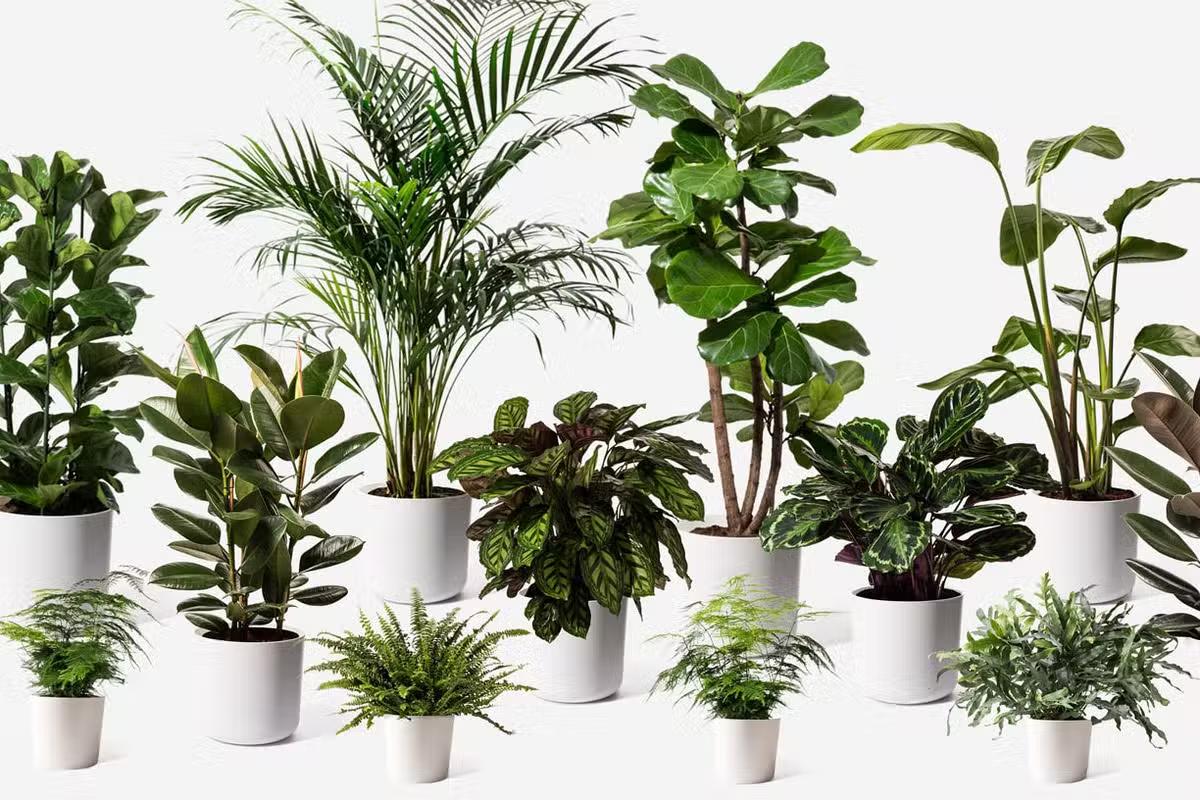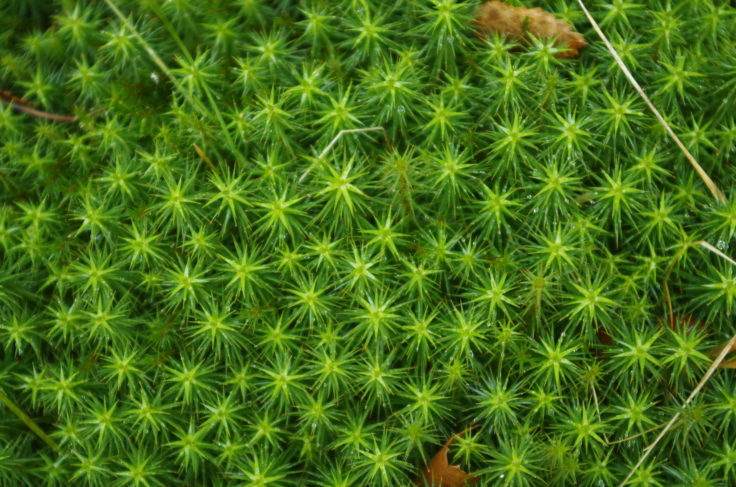What is a Plant?
Importance of Plants to Life on Earth
 Photo courtesy of Evening StandardOpens in new window
Photo courtesy of Evening StandardOpens in new window
|
The world of living organisms can be grouped in many ways. One such classification is the five kingdom system:
- Plantae (plants)
- Animalia (animals)
- Fungi
- Prokaryota (bacteria)
- Protoctista (all oher organisms that are not in the other kingdoms, including algae and protozoa).
What distinguishes the plant kingdom from the other four kingdoms?
Plants are largely sedentary and live on land (albeit some in aquatic environments such as ponds and rivers). They are multicellular and their cells have cellulose cells walls and a nucleus. Most importantly, they are autotrophs (the producers), that is, organisms that are able to convert energy from one form, that is light, into a chemical form stored in organic molecules such as sugar and starch through the process of photosynthesis.
Animals, among other things, have no cell walls and are heterotrophs (the consumers). They rely on eating ready-made organic molecules for their nutrition and feed on plants and other organisms. Fungi do not photosynthesize and although some algae and bacteria do so, the former are aquatic organisms and the latter do not have a nucleus.
The plant kingdom contains a range of plant groups which reflect their evolutionary pathway from simple organisms, such as mosses and liverworts, to the more advanced conifers and flowering plants. Mosses and liverworts are the most primitive and are termed non-vascular plants as they have no specialized tissue for conduction of water and minerals. This, together with the need for water for reproduction, limits their size and restricts them to damp shady habitats.
 Figure X-1. A moss flora plant. Source: British Antarctic SurveyOpens in new window
Figure X-1. A moss flora plant. Source: British Antarctic SurveyOpens in new window
|
The vascular plants contain conducting tissue (xylem and phloem) and range from ferns to higher plants such as gymnosperms, which include conifers, and angiosperms (the flowering plants).
The lower vascular plants, of which ferns are an example, spread by means of spores, in common with the non-vascular plants. They also require water for reproduction so they tend to be found in damp places.
Ferns provide a wide range of decorative plants in the garden and as houseplants, with many attractive leaf shapes and forms and a variety of sizes. They are especially useful for planting in shade.
In contrast, the higher vascular plants, the angiosperms and the gymnosperms, which are more evolutionarily advanced, produce seed and spread by this means rather than by spores. It is mostly the higher plants that are by far the biggest and most diverse group of plants used in horticulture.
Plant Classification – Families, Genera and Species
Classification involves putting objects or organisms into groups based on characteristics which the members of the group share, it is something we do all the time and it is very useful.
For example, the fresh produce section of the supermarket contains a salad section, a vegetable section and a fruit section. The fruit section in turn is subdivided into smaller groupings such as citrus (oranges and lemons), top fruit (apples and pears) and soft fruit (strawberries, blackberries and raspberries).
This enables us to find what we want quickly and know that what we are buying has particular characteristics. In the same way, the plant kingdom is classified into major groups, such as vascular and non-vascular plants described above, which are in turn subdivided into smaller groups. For gardeners, the groupings of plants which are most commonly encountered are family, genus and species.
Plant families were first described comprehensively by the Swedish botanist Linnaeus in the eighteenth century. His classification was originally based on flower structure, although nowadays many other factors such as plant chemistry and genetics are used in addition to their external features.
Many of Linnaeus’ original family names and groupings still stand. Currently about 240 plant families are recognized. Plant family names always end in – aceae for example, Lamiaceae (the nettle family) or Poaceae (the grass family).
The family is an important grouping in horticultureOpens in new window as all plants within a family have certain characteristics in common, so predictions can often be made about other family members. For example, many members of the family Rosaceae (the rose family) are susceptible to the disease fireblight, aiding identification and enabling prediction of the spread of this disease.
- A genus is a group of individuals within a family that have characteristics in common.
- A species is a group of individuals within a genus that have characteristics in common and are able to breed among themselves.
Within a family, plants are organized into groups of similar plants called genera (sing. Genus). A family may contain many genera, such as the Asteraceae (the daisy family) with 1,317 genera including Lactuca (lettuce), Taraxacum (dandelion) and Dahlia, or a few such as Geraniaceae with just five including Geranium and Erodium.
A genus is made up of groups of similar plants called species. A species is a group of individual plants which show the greatest degree of mutual resemblance, and which, most importantly, are able to breed among themselves but not with plants from another species.
Characteristics of Plants
The distinguishihng feature of plants is their respiration; they inspire carbon dioxide and expire oxygen, as opposed to animals and fungi which do the opposite, and they metabolize by photosynthesis.
Other features include limited locomotion and lack of excretion leading to some plants beign poisonous. If a life form meets these criteria it is a plant. Please not that not all are flowering plants (angiosperms).
Planate are multicellular organisms which produce food by the process of photosynthesis. This kingdom includes organisms that range from a tiny moss to a giant tree. All plants are multicellular and eukaryotic. One of the characteristic features of plants is the presence of pigments like chlorophyll and cartenoids which aid to convert sunlight into chemical energy by the process of photosynthesis.
Plants are said to have evolved from algae as they formed colonies on empty landmass. Some plant fossils suggest that plants would have appeared about 400 million years ago. They are said to have evolved from green algae and invaded the vacant land. The earliest fossils of vascular plants are about 370 million years old. Flowering plants are said to have evolved about 130 million years ago.
Photosynthesis Process
The process of photosynthesis carried out by plants and algae are the primary source of energy and organic material to all ecosystems. Photosynthesis has resulted in changing the early Earth’s atmosphere, which is now with 21% oxygen.
All animals and most of other organisms are aerobic and depend on oxygen. Plants are the primary producers in a food web and are the basis of all ecosystems.
Many animals depend on plants for shelter, oxygen and food. Land plants play a key role in water cycle and many other biogeochemical cycles. Some plants can also fix atmospheric nitrogen by means of nitrogen fixing bacteria making plants an important part of the nitrogen cycle. Roots of plants are important to soil development and prevention of soil erosion.
Many animals have co-evolved with plants. Many animals like insects pollinate lower in turn receiving food in the form of pollen or nectar or some animal’s aid in seed dispersal by eating fruits. Plants also provide home, food to many animals.
Importance of Plants
- Plants are essential to maintain the nature’s balance and also human life. Plants are the backbone of all life and are essential to human beings.
- Food we consume comes directly or indirectly from plants.
- Oxygen is the byproduct of photosynthesis, which is essential for our survival.
- Plants play an important role in water cycle; they help water from the soil to atmosphere through transpiration.
- Almost all organisms depend on plants for food and shelter.
- Plants utilize the carbon and help to keep carbon gases of the atmosphere in check.
- Many of the drugs used come from plant derivatives. Most of the people rely on plant derivatives for personal and healthcare. Plants have mutualistic relationships with many fungal species. They also have parasites like the mycorrhizal fungi and epiparasites. Epiphytes are plants that grow on other plants without being parasites. There are about 600 plants that are carnivorous which trap small animals for nutrition.
See also:
- Sadava. D, H.C. Heller, G.H. Orians, W. Purves, D.M. Hillis. Life: The Science of Biology, 8th edition. Sinauer Associatews and W.H. Freeman and Company 2008.
- Cunningham, W.M. Cunningham and B. Saigo, Environmental Science: A Global Concern., McGraw Hill, 2007, p.374.
- The Calvin cycle takes place in the stroma, the part of the chloroplast where CO2 is converted to sugars.
- Wilson, E. O. “Vanishing before our eyes.” Time Magazine April-May 2000, pp. 29 – 30.
- R. Costanza, R. d’Arge, R.de Groot, S. Farber, M.Grasso B. Hannon, K. Limburg, S. Naeem, R.V.O’Neil, J. Paruelo, R. Raskin, P. Sutton and M. van den Belt, “The Value of the World’s Ecosystem Services and Natural Capital,” Nature 385 (May 1997): 253 – 262.

